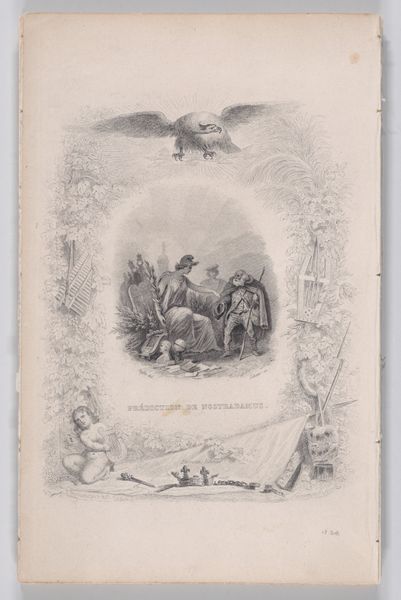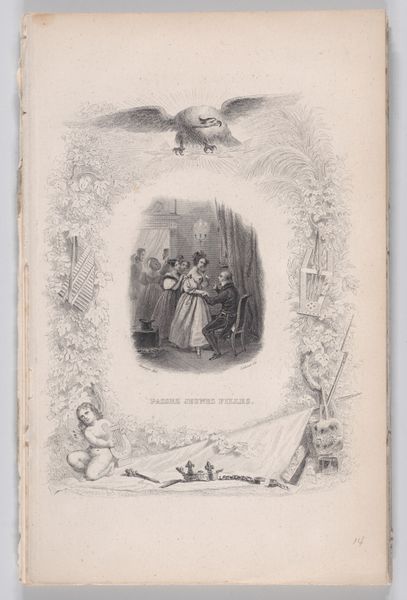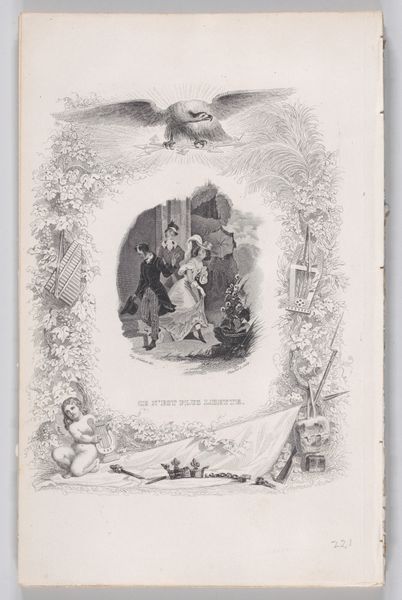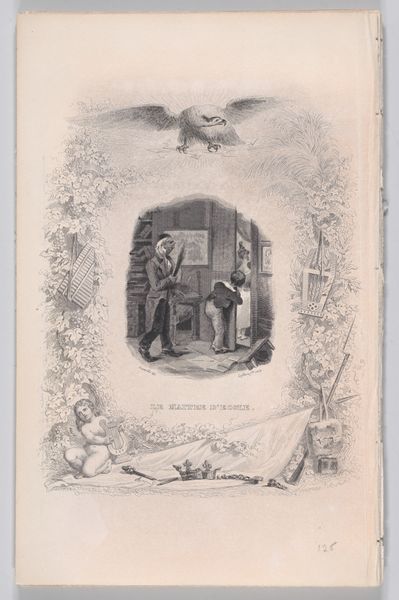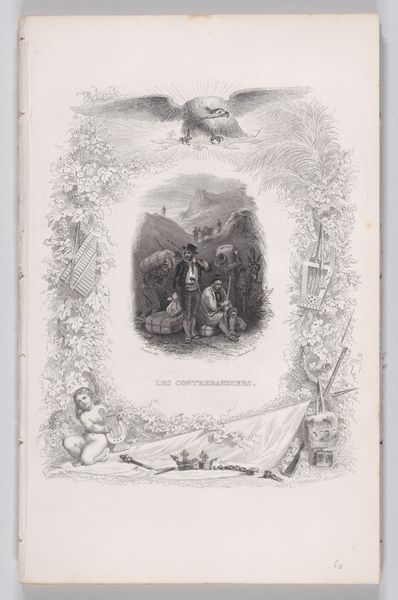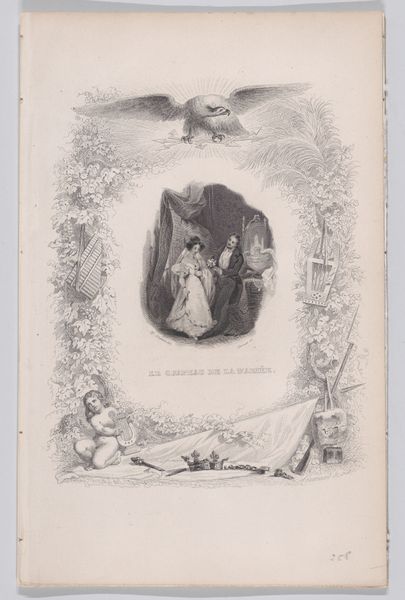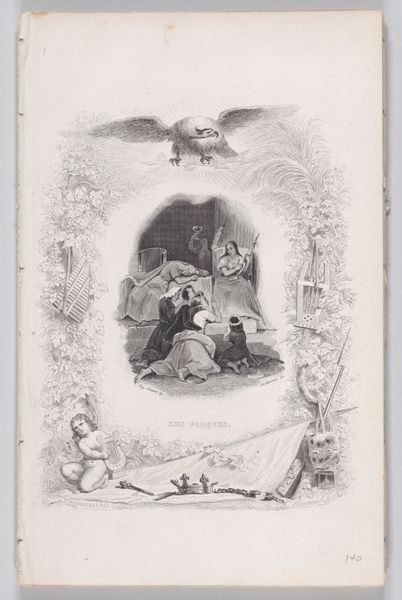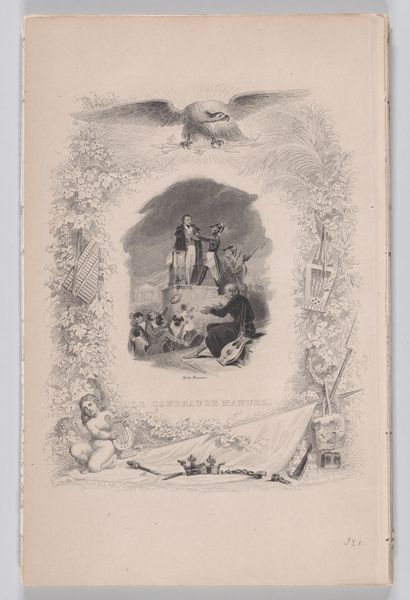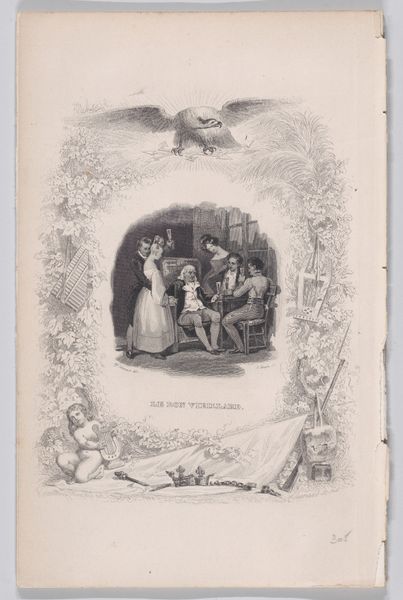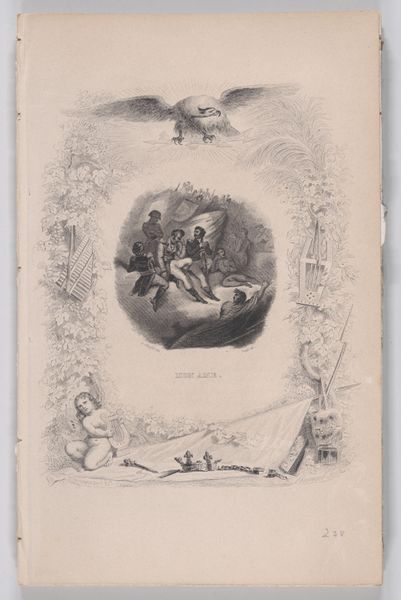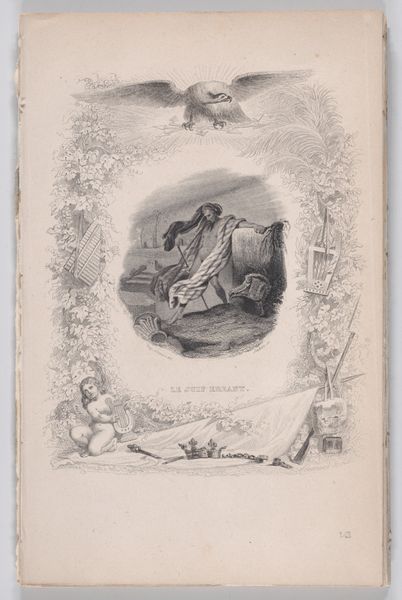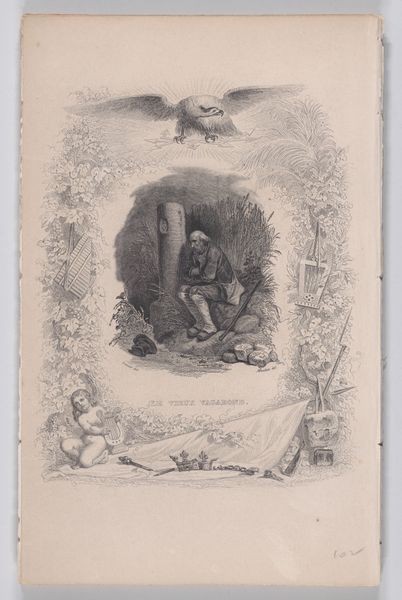
Jeanne, the Redhead, from "The Songs of Béranger" 1829
0:00
0:00
drawing, print, engraving
#
drawing
#
narrative-art
# print
#
landscape
#
figuration
#
coloured pencil
#
romanticism
#
engraving
Dimensions: Sheet: 8 5/8 × 5 1/2 in. (21.9 × 14 cm)
Copyright: Public Domain
Curator: Immediately, my eye is drawn to the poignant stillness—that grayness—punctuated by occasional bright sparks. Is that truly light, or is it more symbolic, do you think? Editor: This engraving, titled "Jeanne, the Redhead, from 'The Songs of Béranger,'" created in 1829 by François-Louis Français, feels deeply rooted in the socio-political climate of post-Revolutionary France. The collection it comes from, Béranger's songs, were quite popular and often critical of the restored monarchy. Curator: Béranger was controversial! That adds another layer. Seeing it, I fixate on the motifs in the borders: floral arrangements alongside the fallen crown, a broken harp, and what seems to be shackled crucifixes discarded. Heavy symbols of loss. Editor: Absolutely, the visual language speaks volumes about the era's anxieties and fractured ideals. That eagle soaring at the top also can't be ignored. It’s an interesting visual juxtaposition. A figure in supposed flight while a royal mess lays below. Curator: Precisely. Consider its place within the book it came from and it almost gives the page itself the aura of a monument, remembering something, perhaps. Editor: That's perceptive. And in that case the depiction of Jeanne herself seems important as representative. A mother, perhaps fleeing? Certainly burdened and carrying children. What connections can we glean from Jeanne’s relationship to everything laying abandoned around her? Curator: Well, Béranger’s songs often gave voice to the common person. So it wouldn't be too far a reach to surmise Jeanne as a symbol of a mother raising up a generation amidst the failures of empire and royalty, right? Raising them perhaps to seek higher things. Editor: I like the positive turn. I was trapped by the visual somberness, but you remind me how popular and uplifting this book ended up being. A visual elegy, yes, but ultimately perhaps about hope and generational change? Curator: Exactly. Seeing beyond just the gloom makes one appreciate how such art tapped into widespread, potent sentiments—reshaping, and being reshaped by the period it occupied. Editor: And examining the language of its imagery highlights the continuity of certain human ideals throughout turmoil. Thank you; I see much more in this engraving now.
Comments
No comments
Be the first to comment and join the conversation on the ultimate creative platform.

